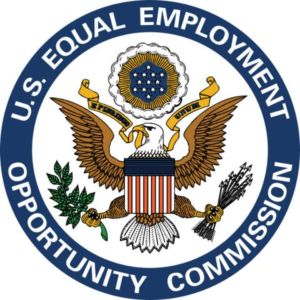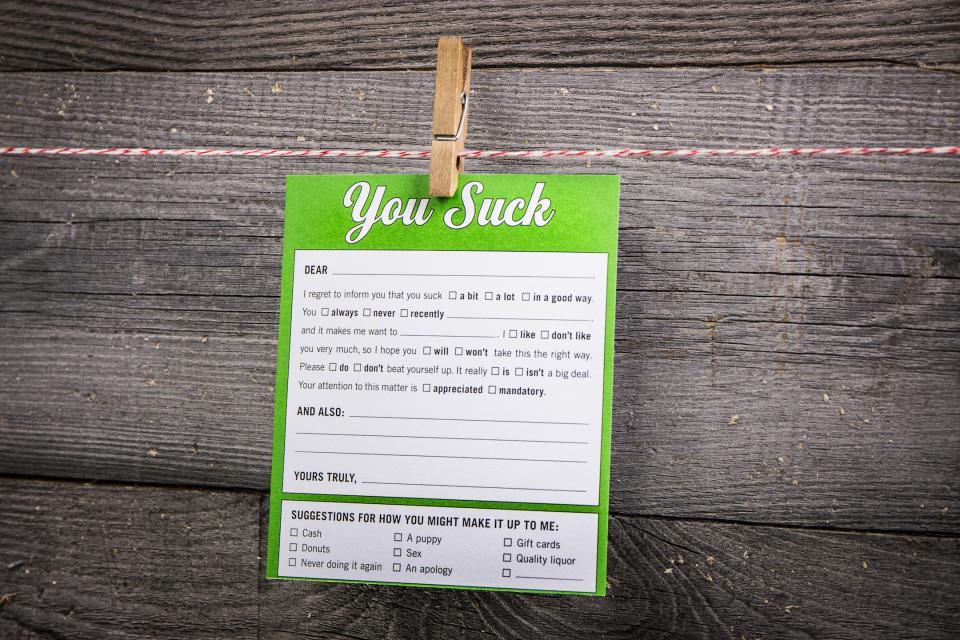 This is the fourth post in a series about demand letters. My first post described what a demand letter is and just how demanding it should be. In the second post, I discussed how to prepare yourself for your company’s negative response to your demand letter.
This is the fourth post in a series about demand letters. My first post described what a demand letter is and just how demanding it should be. In the second post, I discussed how to prepare yourself for your company’s negative response to your demand letter.
I warned that your employer would probably defend itself by calling you a bad employee. This is, not surprisingly, infuriating to deal with. You know it’s an untruthful attempt by the company to avoid taking responsibility for your problems at work.
But because you read the previous blog, you are prepared to deal with that response. You will be able to shut down your employer’s attempt to get under your skin.
Now let me give you some good news, though it’s tempered with some more bad news. The good news is that being able to weather the coming storm involves practicing the same skill you just mastered: getting control of your emotions so that you can respond dispassionately. The bad news is that reading your employer’s response to your demand letter is only the first of many times you’ll get to practice this newfound skill.
There are two more major time periods where you’ll get to practice Zen-like serenity when your employer tries to rattle you. The first is during your administrative process before the Equal Employment Opportunity Commission (EEOC). The second occurs at mediation. In this blog post, we’ll explore what happens if you have to file at the EEOC.
The Administrative Claim Process
If you are pursuing a discrimination claim, before you can go to court, you must file an administrative claim, either with the EEOC or with a state or county Fair Employment Practices Agency (FEPA). (Note that many non-discrimination employment claims, like wage-and-hour claims, can go straight to court without first being filed with the EEOC.)
FEPAs have an agreement with the EEOC allowing them to “cross-file” discrimination claims from the local FEPA to the EEOC. This cross-filing is particularly helpful when you are pursuing claims under both state and federal laws.
For instance, in the DMV area (Washington, D.C., Maryland, and Virginia), both the D.C. Office of Human Rights and the Fairfax Office of Human Rights and Equity Programs are FEPAs that work with the EEOC. That means you can file claims with these agencies that encompass state and local laws, like the D.C. Human Rights Act or the Fairfax County Human Rights Ordinance, at the same time that you cross-file your federal discrimination claims. Note that in most areas in the DMV, you have 300 days after the “adverse employment action” to file a charge of discrimination under federal law. If you don’t file within this time frame, you will forever lose your right to file a lawsuit based on that incident of discrimination. As a practical matter, that means you’ll lose your ability to get your employer to settle your case out of court if you don’t act quickly.
But I digress. Regardless of where you file, the process is similar. You file your complaint, known as a “charge,” with the agency. Then, some months later—and yes, it will usually take months—you’ll get some kind of response back from the agency.
Be prepared to be disappointed.
Not Again! What Do You Mean, Disappointed?
Look, I like the folks at the EEOC and our local FEPAs. Most of them have their hearts in the right place, but the simple fact is that they are overworked and their caseloads are too heavy. They’re looking for ways to lighten the load just to survive. As a result, they will sometimes take your company’s side and parrot that response back to you as the initial agency position. This can be really tough medicine if you’re not prepared. You likely came to the agency with great hope that you would prevail and that justice would be done; you may even have had an intake person who encouraged you.
And now you get the agency response and it is as if your former boss were reading it to you. Getting the company’s response to your demand letter was bad enough. Now you are basically getting to read your company’s lame defense again, except this time it’s on official agency letterhead.
When I say response here, what I’m talking about is a letter from the agency setting forth that agency’s initial position. Usually you, or your attorney if you have one, will have an opportunity to respond to the initial position before the agency makes its final determination.
However, it is quite possible that you will not receive such a letter in your case. Instead, you might get a right-to-sue letter. The only feedback you’ll get from that right-to-sue letter is a checkmark beside a box indicating that the EEOC or FEPA could not determine whether your company violated the law.
How do you know what kind of letter you’re going to receive? You can’t. It’s up to the whim of the agency and the specific investigator who is assigned to your case. Most of the time, neither you nor your attorney will know what kind of communication you’ll receive until it shows up in the mail.
What Are You Supposed to Do Now?
 So, what do you do if you get the agency’s initial position letter and it’s just repeating your former employer’s party line about what an awful employee you were? You know this part already. You do whatever you need to do to work out your first emotional reaction. Go walk the dog, punch a pillow, or cry with your spouse. There is no question that this is beyond unfair.
So, what do you do if you get the agency’s initial position letter and it’s just repeating your former employer’s party line about what an awful employee you were? You know this part already. You do whatever you need to do to work out your first emotional reaction. Go walk the dog, punch a pillow, or cry with your spouse. There is no question that this is beyond unfair.
One thing you should (usually) not do is blame your attorney. The administrative process is largely immune to good advocacy. Yes, an attorney can help you put your best foot forward, but often this has no bearing on what the agency does with your case.
Why bother, then? Because you want to communicate to your employer at every step along the way that you know what you’re doing and you’re taking this seriously. Eventually that employer might write you a check, and the size of that check will largely depend on how the employer’s attorney handicaps your odds of winning in court. A professionally drafted, persuasively presented charge before the EEOC or FEPA might not help you with the administrative agency’s response, but it may well make your employer more inclined to settle.
Are you back from letting it all out? Good, now we are ready to fight on.
What Does the EEOC’s Response Really Mean?
This is not nearly as bad as it seems. Here’s why.
First, this happens all the time. Indeed, it happens most of the time. The agency generally takes the side of the employer. Why? It’s just easier. The (overworked) investigator is trying to weed out cases, and yours (if it’s like most) probably isn’t a slam dunk. The agency generally saves its firepower for high-profile cases or those that fit within its Strategic Enforcement Plan.
Second, the agency likely did not do any real independent investigation. At most, the EEOC investigator called up your former employer and talked to HR or the company attorney over the phone. So the agency’s response is probably not based on any kind of deep inside knowledge. It’s likely that the person who signed this letter knows less about your case than you do. Just because the EEOC says your case is a loser doesn’t mean that it is. (Note that some local FEPAs will be more aggressive. For instance, the Fairfax Office of Human Rights and Equity Programs will often actually go out to the employer’s location and interview witnesses in person.)
Third, and most important, the EEOC’s response will have almost no bearing on the final outcome of your case. Our firm (like many others) has gone on to achieve great success for our clients after getting this kind of weak response from the EEOC. It’s sort of like your kid brother telling you that you look terrible just before you go out on a date. It doesn’t mean anything. It’s just something he does. And it has no influence on how the date will go.
It’s the same here: this is just something unfortunate that happens in the agency process. It has no real bearing on whether you will get a good settlement offer or even whether you will eventually win your case in court. Indeed, agency findings are not admissible in court. When you get to trial, it’s as if this administrative process never happened.
Let me say, however, that every once in a while, the agency will actually agree with you. In that case, the EEOC or FEPA might decide to take your case and litigate it for you. This isn’t quite the equivalent of winning the lottery, but it’s close. So, you can certainly hope for this outcome—just don’t bank on it. Expect that the administrative process will, at best, give you an opportunity to settle your case. At worst, it will be another frustrating part of the waiting game until you can get to court.
Summing It Up
Here are some important points to remember about the administrative claims process:
- If you have a discrimination claim, you must file a charge with the Equal Employment Opportunity Commission (EEOC) or a local Fair Employment Practices Agency (FEPA) before you go to court.
- Usually the agency’s response will sound just like your employer’s response. Yes, it will be emotionally trying to read that again.
- The agency probably doesn’t know much about your case, though, and its initial response has no impact on the eventual outcome of your case.
If you have a discrimination claim and need to file a charge with an administrative agency, enlist the help of an attorney early on to let your former employer know you mean business. Please contact the Spiggle Law Firm for help with evaluating your case and deciding what to do next.





